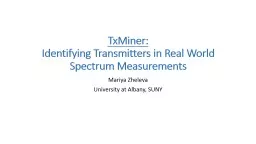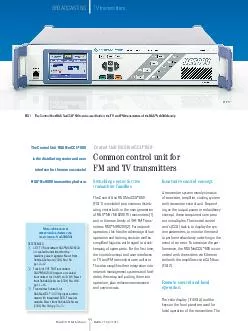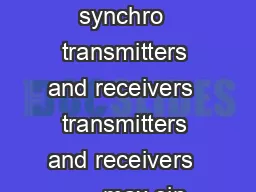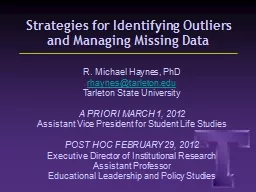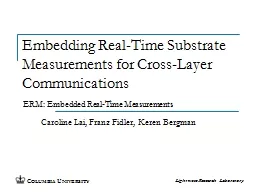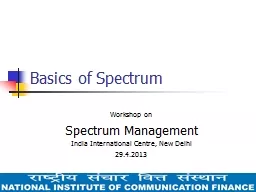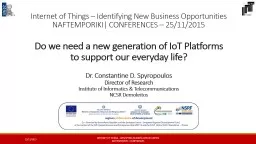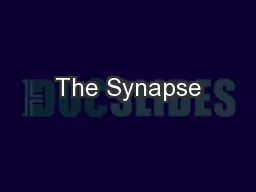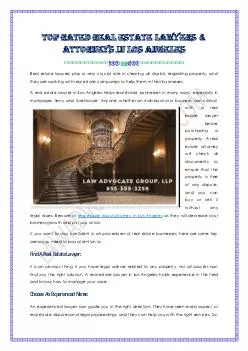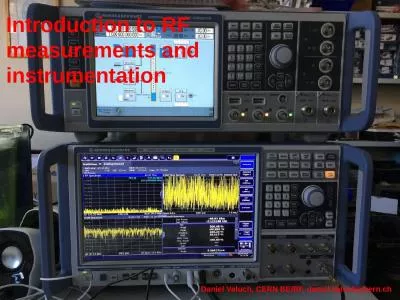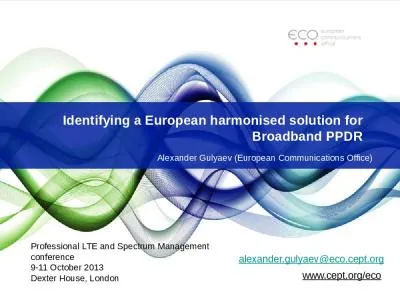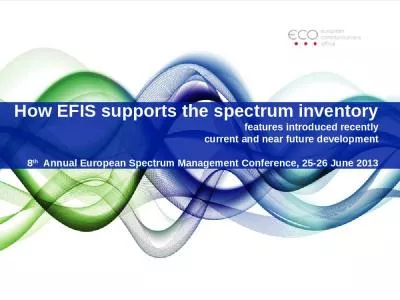PPT-TxMiner : Identifying Transmitters in Real World Spectrum Measurements
Author : pamella-moone | Published Date : 2018-11-09
Mariya Zheleva University at Albany SUNY Spectrum Allocation 100 Spectrum Assignment in Washington State According to FCC dashboard A total of 2498MHz 773 appear
Presentation Embed Code
Download Presentation
Download Presentation The PPT/PDF document "TxMiner : Identifying Transmitters in ..." is the property of its rightful owner. Permission is granted to download and print the materials on this website for personal, non-commercial use only, and to display it on your personal computer provided you do not modify the materials and that you retain all copyright notices contained in the materials. By downloading content from our website, you accept the terms of this agreement.
TxMiner : Identifying Transmitters in Real World Spectrum Measurements: Transcript
Download Rules Of Document
"TxMiner : Identifying Transmitters in Real World Spectrum Measurements"The content belongs to its owner. You may download and print it for personal use, without modification, and keep all copyright notices. By downloading, you agree to these terms.
Related Documents

